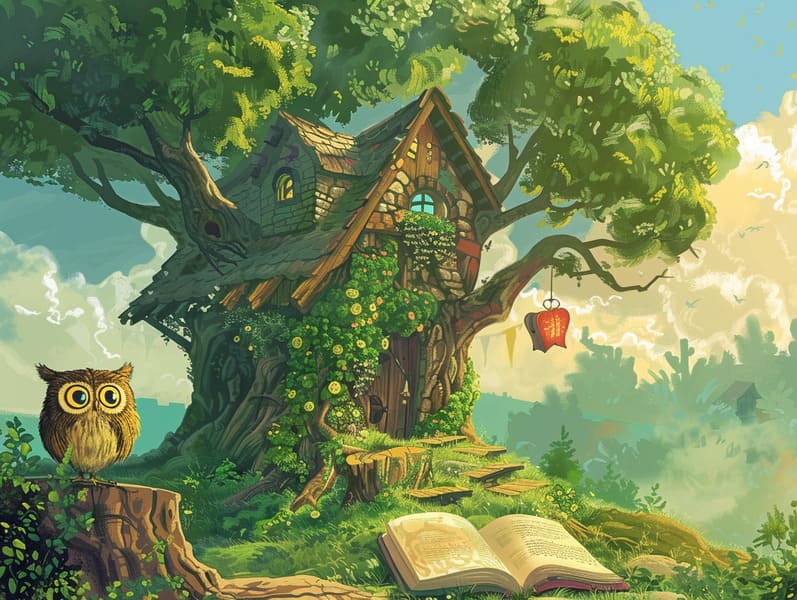The Start of Popular Fairy Tales and Its Eternal Grandeur.
The Start of Popular Fairy Tales and Its Eternal Grandeur.
Blog Article

Famous fairy tales have old origins. These tales have been told from one generation to the next ages before they were ever documented. They arose from a variety of backgrounds, including Middle Eastern traditions. They were initially passed along among elders, often carrying themes and messages relevant to the societal norms and beliefs of the time.
Jacob and Wilhelm Grimm, the two Grimm brothers, were among the first to collect many of these beloved narratives. Their collection, "Grimm's Folk Tales," included narratives like "The Little Glass Slipper," "Little Brother and Little Sister," and "Snow White," which have since become mainstays in the world of famous fairy tales. Similarly, Hans Christian Andersen's imaginative tales, such as "The Story of the Little Mermaid," and "The Duckling's Story," have floated into hearts worldwide, establishing their place in the pantheon of beloved fairy tales.
Despite being ancient, classic fairy tales remain as pertinent as ever, especially as kids' bedtime tales. These enchanting tales are now available in numerous formats, including colorful picture books, captivating animations, and digital storybooks.
Their persistent charm can be ascribed to several enchanting factors:
Ethical Lessons: Classic fairy tales often present important moral lessons. Stories like "The Shepherd Boy and the Wolf" teach the significance of honesty, while "The Tale of the Tortoise and the Hare" show the benefits of determination and meekness. These narratives offer the young clear distinctions between good and bad, helping to shape their moral compass in a subtle yet significant way.
Kindness and Comprehension: Old fairy tales frequently involve protagonists facing problems and hurdles, encouraging young listeners to understand with their struggles and celebrate their triumphs. For instance, "The Story of Beauty and the Beast" highlights the merit of seeing beyond the surface to see the true essence of a character, nurturing empathy and knowledge.
Cultural Awareness: Many classic fairy tales are imbued with the cultural contexts from which they emerged. Engaging with these fairy tales can provide delightful insights into different beliefs, developing a sense of international awareness and perception.
Imagination and Innovation: The mythical elements in ancient fairy tales—supernatural elements—generate children’s creative minds. These narratives transport readers to otherworldly realms, kindling innovative dreams and a sense of delight that lasts a lifetime.
Classic fairy tales are not only whimsical but also educational. They work as spellbinding tools in enhancing various cognitive and emotional skills in young ones. When fairy tales are narrated, they enhance language acquisition by offering new phrases and intricate sentence structures. This practice also promotes auditory perception and mindfulness, as kids pay close attention, anxious to see what happens next.
Furthermore, exploring the themes and characters of traditional fairy tales can enhance thought processes and reasoning skills. Young ones are instructed to pinpoint patterns, expect results, and comprehend cause and effect. These discussions also support kids verbalize their thoughts and feelings, advancing their emotional intelligence.
In today’s electronic age, the abundance of free fairy tales online has made these stories more attainable than ever. Online resources and mobile apps feature wide arrays of bedtime fairy tales that can be looked at or played anytime, anywhere. Fairy tales narrated are particularly in demand, featuring an interactive method for kids to immerse in these delightful tales. Spoken stories and spoken videos carry characters and settings to life, often accompanied by bewitching audio effects and musical scores that amplify the narrative adventure.
The persistent attraction of classic fairy tales lies in their ability to adjust to the present while retaining their main lessons. Contemporary renditions of these stories often introduce more representative characters and modern settings, making them understandable to today’s audience. However, the underlying themes of guts, benevolence, and impartiality remain unchanged, continuing to reach readers of all ages.
Old fairy tales also offer a sense of ease and homeliness. They deliver up a organized narrative with a straightforward beginning, middle, and end, often ending with the finalization of conflicts and the triumph of virtue over vice. This uniformity can be solacing for kids, making known a sense of solidity in an variable world.
Ancient website fairy tales continue to delight and inform new generations, maintaining their wonder and applicability in modern society. As nighttime stories for kids, they put forth a perfect blend of fantasy and learning, boosting moral values, empathy, and creativity. The availability of online storybooks and the well-received status of fairy tales voiced secure that these old stories remain within reach to new generations.
By sustaining and circulating these stories, we continue to laud the rich tapestry of human imagination and cultural heritage. Whether you are delving into a vibrantly illustrated book, viewing a cyber library, or listening through an voice book, the wonder of popular fairy tales is always within reach. These tales illustrate of the timeless influence of narratives and its ability to gather us across centuries and lands.
Even if you are seeing a richly illustrated book, viewing a virtual collection, or listening via an read-aloud story, the wonder of children's fairy tales is always within reach.
These narratives convey of the immortal influence of stories and its ability to tie us across generations and cultures, establishing a link that charms and informs alike.